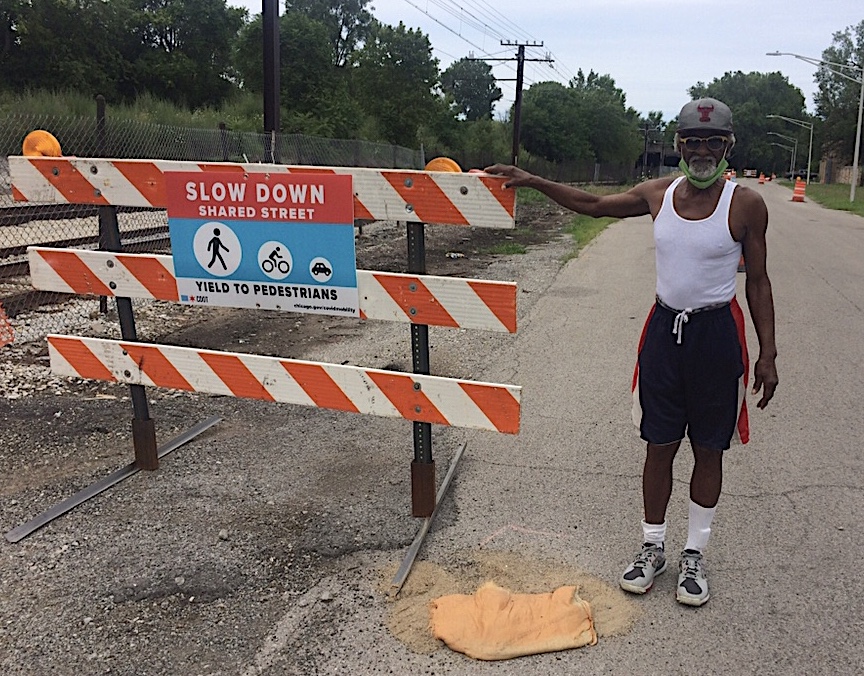Chicago's Slow Streets (the city calls them "Shared Streets"), residential thoroughfares where through traffic is banned to enable safe, socially-distanced walking and biking in the roadway, have become a fairly common sight around town. Much of the news coverage of this pandemic intervention has focused on Slow Streets in bike-friendly North and Northwest Side neighborhoods, where the corridors have seen plenty of use. For example, yesterday Streetsblog reported on Alderman Michele Smith's announcement that Slow Streets treatment on Dickens Avenue in tony Lincoln Park will be dismantled in two weeks, despite the fact that it was used by 636 bicyclists and 913 pedestrians in a single day, and it has a perfect safety record.
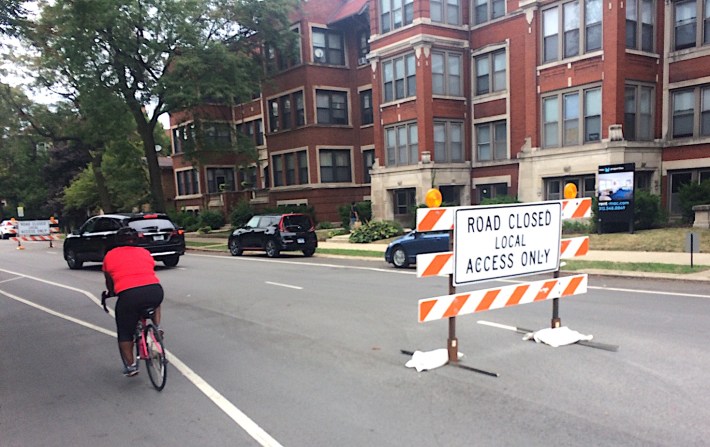
So we decided to check in with folks who live near South Side Slow Streets so see what they think of the pilot. Currently there are Slow Streets on Drexel Boulevard in Kenwood and Oakland; South Shore Drive in Hyde Park; and a small loop in Woodlawn made up of 68th and 70th streets, and Kenwood and Dorchester avenues. As with all Chicago Slow Streets, drivers are prohibited from using the streets as "cut-through" routes to avoid main streets, but parking, deliveries, pickups and drop-offs are permitted.
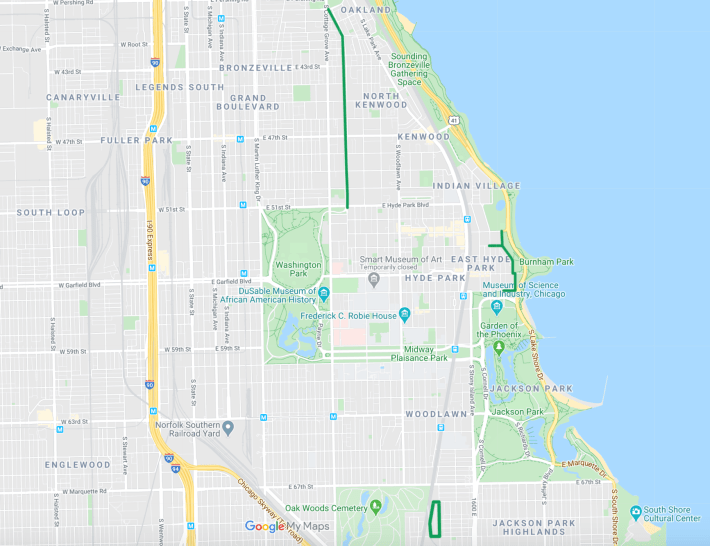
Faye Thurmond, who lives near 68th and Dorchester, said the street treatment, which includes barricades and traffic barrels seems to be good for slowing down drivers and creating safer conditions for walking. However, she indicated that she feels unfair policing and interpersonal violence are more pressing problems in the area than preventing dangerous driving.
Faye's daughter, Jasmine Thurmond, said she thinks the Slow Streets are a good idea. "It's important that we have more shared spaces. When you think of the trails and pathways in the city, there are very few of them in this area, outside of the lakefront, The 606 or the forest preserves." But Jasmine added that the Slow Streets have a few detractors, noting that some of the barricades and barrels have have been moved by disgruntled drivers.
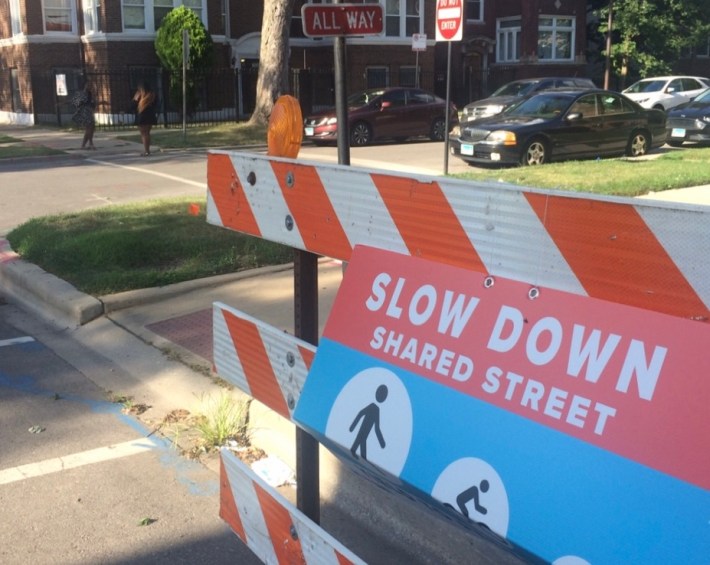
Peter Byrd, who lives a few blocks south near 70th and Kenwood, said he views the Slow Streets as a bit of a hindrance to driving. "They're closing off our streets; Our residents can't park," he said. "I don't appreciate it, because it keeps me from doing a lot of things."
Byrd's comments suggest that more outreach is needed about how Slow Streets work. One solution might be signs that specifically state that while through traffic is not allowed on the corridors, parking, deliveries, and pickups and drop-offs are permitted.
What would be other good South Side roadways for future Slow Streets? Despite his reservations, Byrd said he feels Cottage Grove and Stony Island avenues, nearby multilane streets where speeding is common, could use some traffic calming. A few years ago the Chicago Department of Transportation proposed a road diet with protected bike lanes on Stony Island, but local aldermen vetoed the plan, arguing that it would create traffic jams, although Stony currently has excess capacity for the number of cars it carries. Drivers have fatally struck two cyclists on the avenue since then.
Faye Thurmond said she thinks all residential streets could benefit from traffic calming, and singled out nearby 67th Street as an arterial street where speeding is a problem.
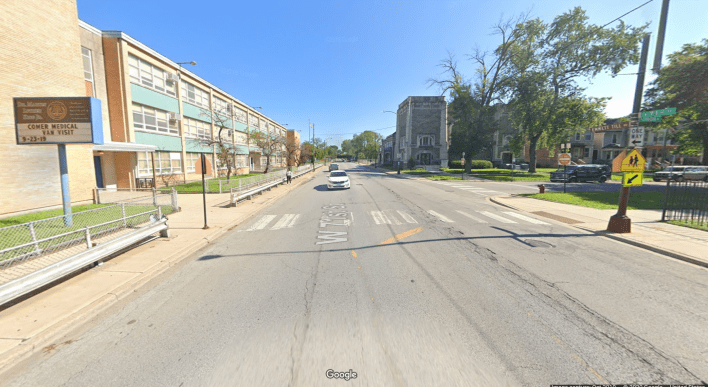
Jasmine Thurmond is the principal of King Academy of Social Justice, 644 W. 71st St., and she noted that 71st also needs some attention, particularly between the Dan Ryan Expressway and Halsted Street, the stretch where her school is located. "The traffic that comes past there, it’s insane to think that they expect students to have to cross that street without there being a light or a stop sign. Oftentimes, I'm afraid for the crossing guard because the people fly through there so quickly. How many people actually break their speed for [the children]?"
